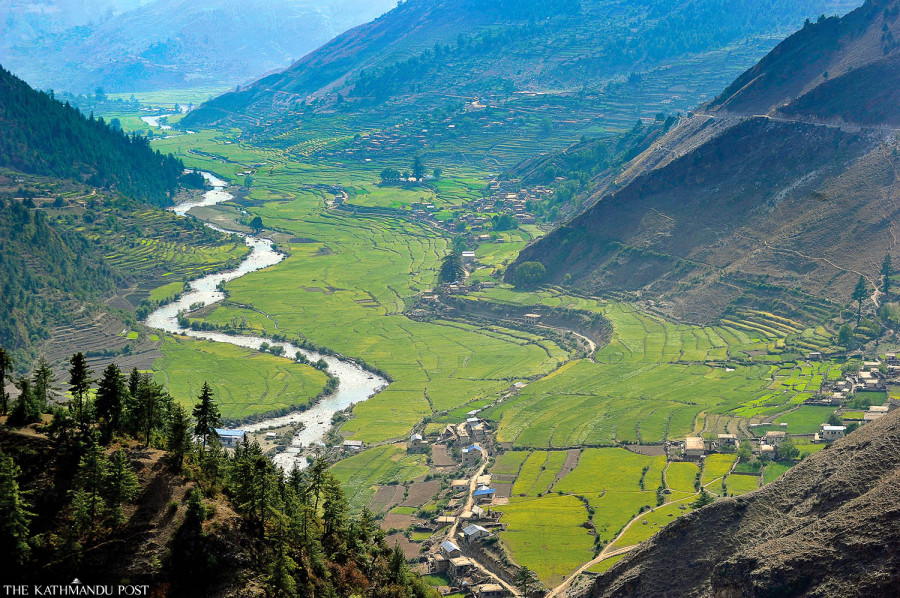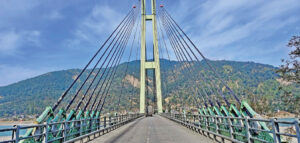
Paddy regions shrivel in Karnali as malady, moo water system take a toll
Farmer Ratan Rawat of Chandannath Region, Jumla, differentiated his cultivating from conventional paddy development to cash crops like apples and vegetables.
He at first utilized to develop paddy as it were. Rawat is presently diminishing the paddy development region and expanding the zone for apples and vegetables.
“I utilized to transplant paddy on my 10 katthas of arrive. But for the final four a long time, I have been developing apples and vegetables,” he said. His paddy grounds has presently been decreased to six katthas.
Most of the agriculturists in the district, locked in in paddy cultivating, have presently exchanged to cash crops.
Khadak Budha, another rancher from the same town, has diminished the paddy field by half. He said he utilized to create 30 sacks of paddy until a few a long time prior, but his yield declined to 15 sacks.
With the great wage from apples and vegetables, Budha diminished the paddy acreage..
“Apple is in demand,” said Rawat. In spite of the fact that he had no deliberate to cut on paddy development, as apple cultivating begun creating great pay, he slowly exchanged to apple production.
In the good countries of mid-western Nepal, commercial vegetable and apple cultivating flourished after paddy begun to abdicate small salary and there was a deficiency of farmhands. The rise in illness too constrained individuals to switch to cash crops from cereal production.
“Vegetable cultivating creates superior pay than developing paddy. That’s why ranchers moved to vegetable farming,” said Rawat.
Farmers have centered on the generation of vegetable seeds as well.
Compared to final year, paddy generation has declined in Karnali this year.
In the current monetary year, 123,795 tons of paddy was created on 39,763 hectares compared to 124,969 tons in the final monetary year.
In Karnali Territory, paddy is primarily created in Surkhet, Salyan, Dailekh and West Rukum.
Jajarkot, Jumla, and Kalikot are moreover a few ranges where paddy is cultivated.
The most elevated height at 3,050 meters is Chhumjul of Jumla, a record elevation where rice is developed in Nepal.
According to the Service of Arrive Administration, Agribusiness and Cooperatives, Surkhet created 52,904 tons of paddy, more than the entirety of Dailekh’s 25,120 tons and Salyan’s 23,630 tonnes.
According to the insights for the past five a long time, paddy generation in Karnali has been ceaselessly declining. In the monetary year 2019-20, paddy yield in Karnali was 151,805 tons, which dropped to 137,165 tons in 2020-21. The yield dropped to 125, 143 tons in 2021-22 and rose marginally to 128,000 tons in 2022-23.
Out of 299,339 hectares of arable arrive in Karnali, cultivating is done on 216,880 hectares. Paddy covers 45,468 hectares.
According to the measurements, paddy in Surkhet covers 12,679 hectares, taken after by 8,313 hectares in Dailekh and 7,078 hectares in Salyan. So also, in West Rukum, paddy is developed on 3,048 hectares, taken after by Kalikot with 3,081 hectares and Jajarkot with 3,063 hectares.
Purna Bahadur Thapa, the ministry’s data officer, said that yield and field of paddy both have declined strongly. “The paddy generation region has contracted, primarily in Surkhet, Dailekh, Jajarkot and Salyan.”
Paddy generation has dropped due to a need of water system. The precipitation harms water system canals in the sloping area. “Lack of precipitation was moreover a issue. If the precipitation gets deferred, it makes challenges sowing the seeds. As a result, paddy transplantation is not completed on time,” said Thapa. “The delay in paddy transplantation impacts production.”
The common government information appears that out of the add up to irrigable arrive in Karnali, as it were 35.21 percent is secured by water system offices. The round-the-year water system office is given as it were on 38,338 hectares, whereas 30,302 hectares are in part irrigated.
Thapa said that the ranchers too confront the issue of deficiently seeds.
As ranchers have connected modern half breed seeds, unused inf
Related,
China reveals model for what may be the world’s quickest high-speed train







